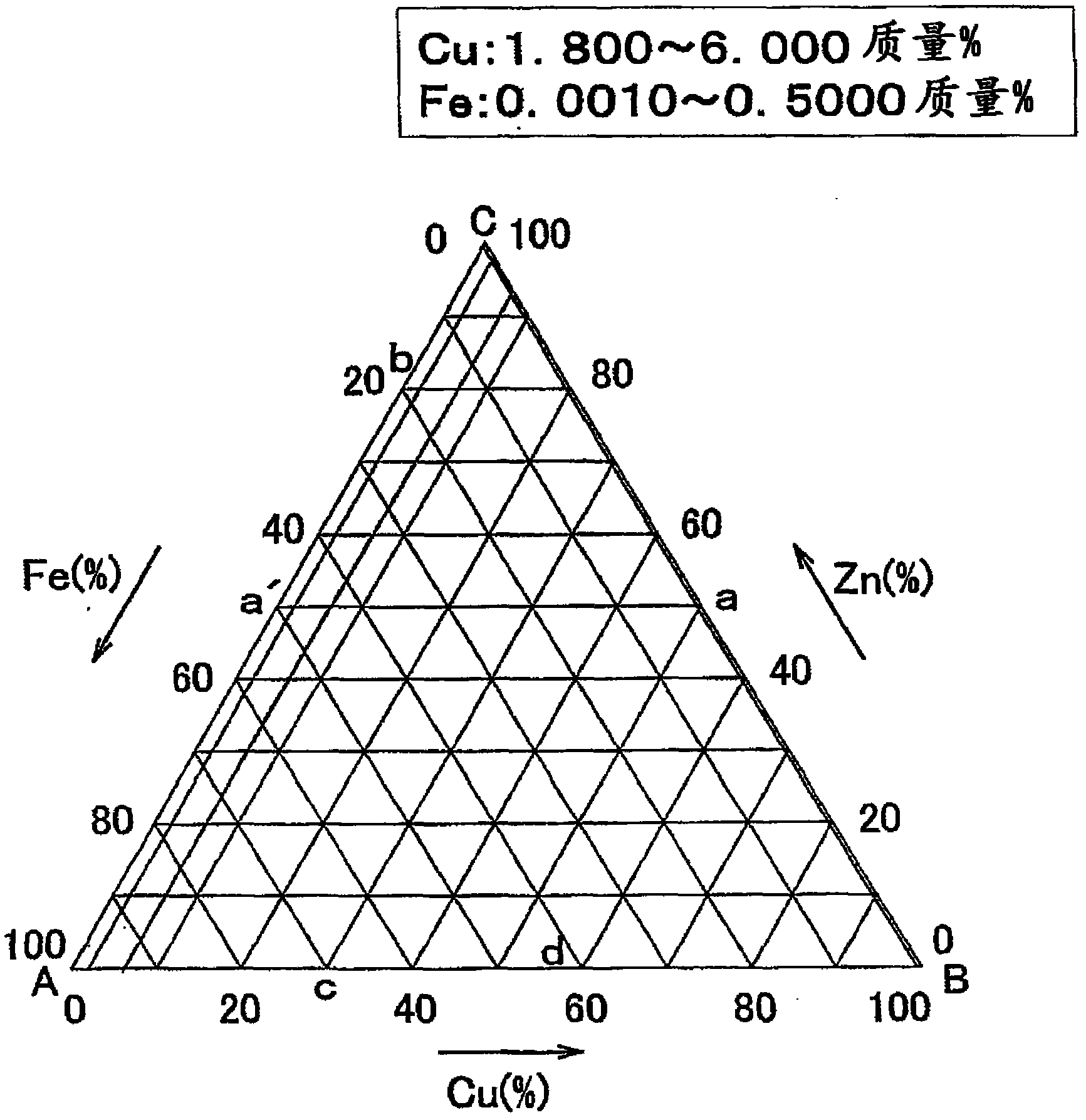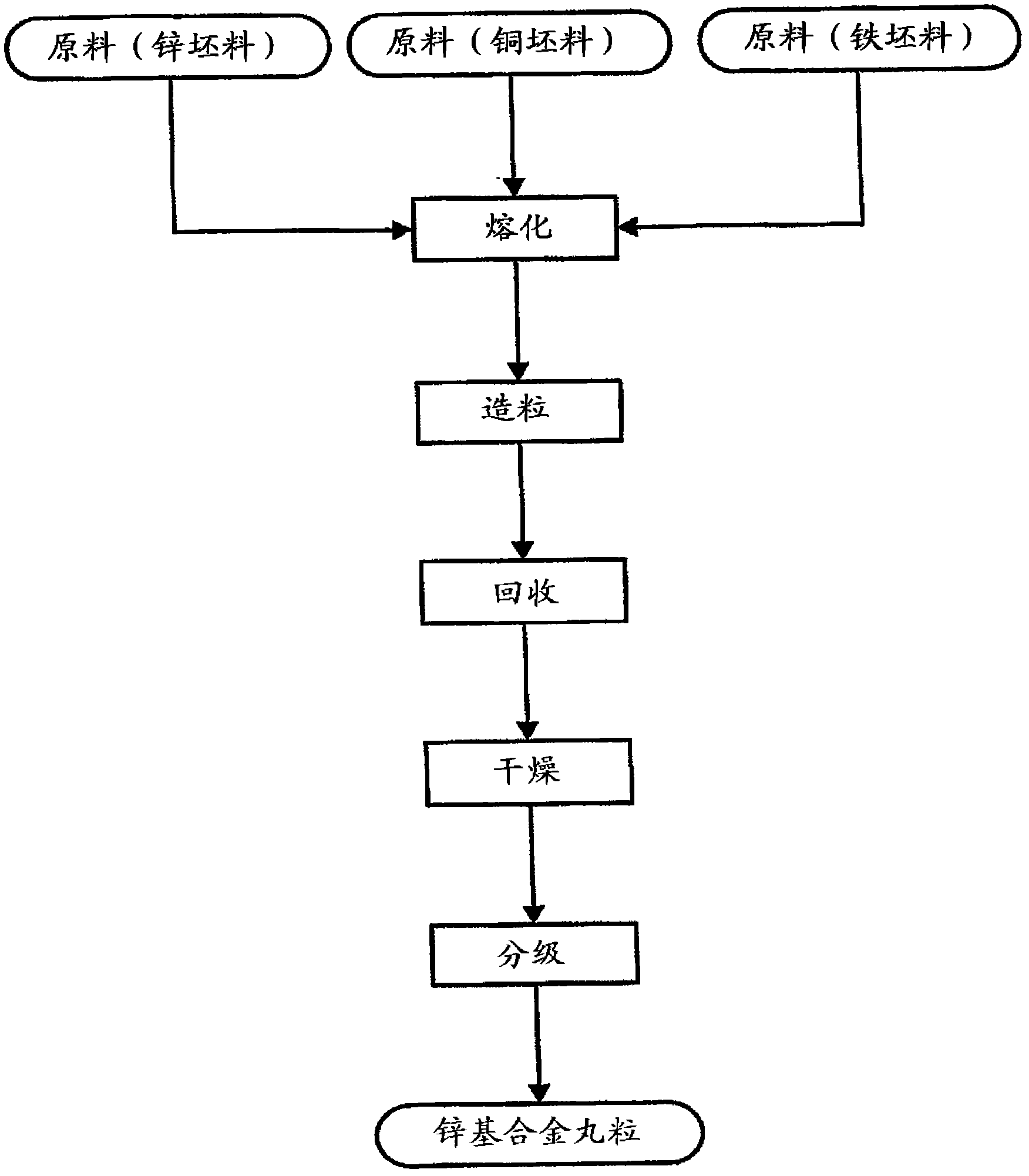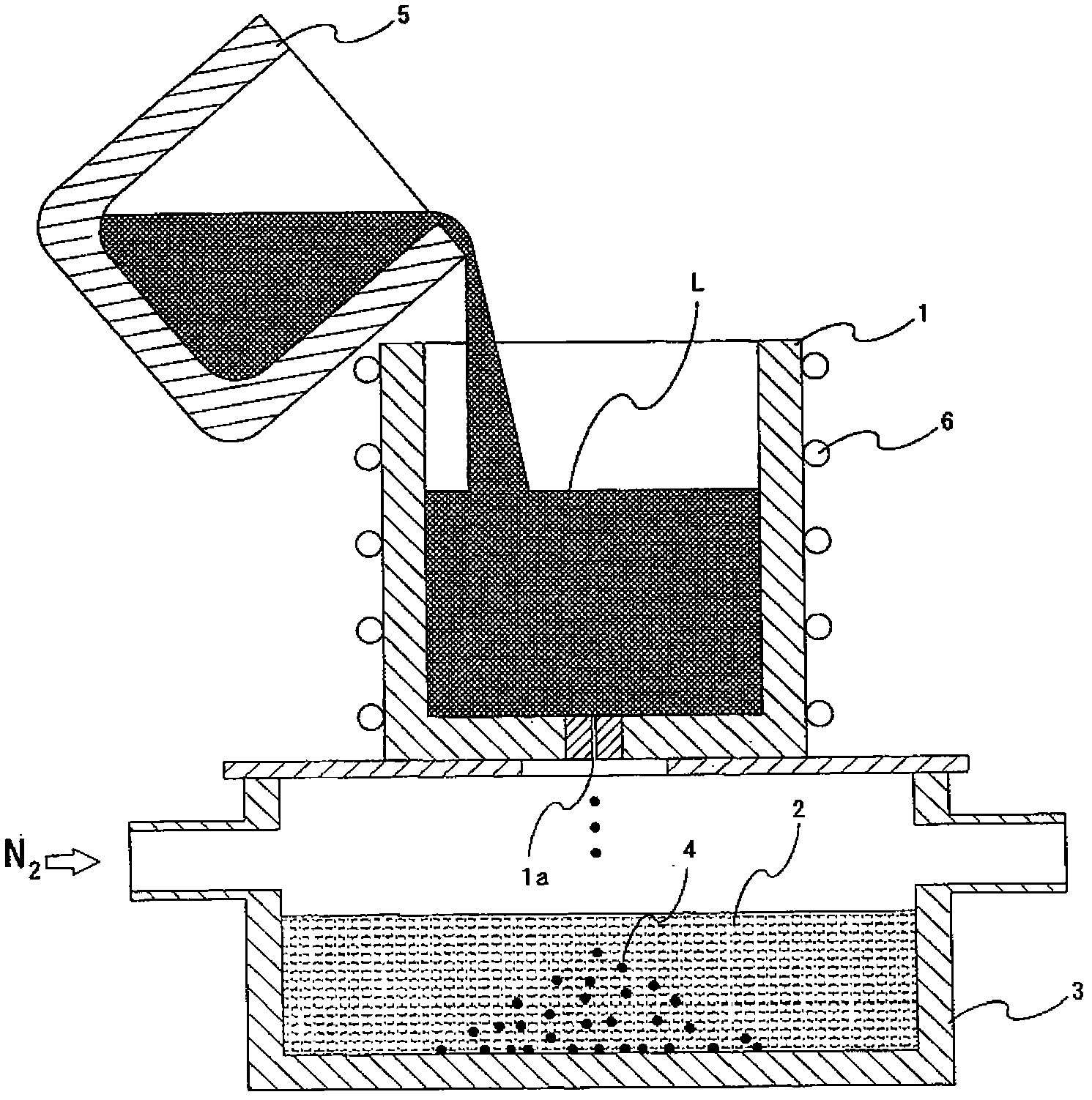Zinc base alloy pellet
An alloy and zinc-based technology, applied in metal processing equipment, abrasives, manufacturing tools, etc., can solve problems such as increased shot consumption, damage to processed products, insufficient deburring ability and grinding and sweeping ability, etc., to achieve Reduced Cu content, excellent deburring, and good unit cost
- Summary
- Abstract
- Description
- Claims
- Application Information
AI Technical Summary
Problems solved by technology
Method used
Image
Examples
Embodiment
[0072] Next, evaluation tests performed to confirm the effects of the present invention will be described. The manufacture of each zinc-based alloy pellet is to use figure 2 and image 3 The drop granulation method shown was carried out. Each pellet produced in this way was classified, and the pellet for projection of each sample whose average particle diameter (median particle diameter) was 1.0 mm was prepared. Then, the following tests were performed on the pellets of each sample, and evaluation was performed. The results are shown in Table 1.
[0073] Table 1
[0074]
[0075] (1) Hardness
[0076] Figure 4 It is a graph showing the relationship between the amount of Fe added and the hardness (Vickers hardness) of the zinc-based alloy pellets of the present invention. From this graph, even if the Cu content is as low as 2.5%, it is easy to obtain high-hardness pellets by adding a small amount of Fe.
[0077] In addition, the Vickers hardness was measured as fol...
PUM
 Login to View More
Login to View More Abstract
Description
Claims
Application Information
 Login to View More
Login to View More - R&D
- Intellectual Property
- Life Sciences
- Materials
- Tech Scout
- Unparalleled Data Quality
- Higher Quality Content
- 60% Fewer Hallucinations
Browse by: Latest US Patents, China's latest patents, Technical Efficacy Thesaurus, Application Domain, Technology Topic, Popular Technical Reports.
© 2025 PatSnap. All rights reserved.Legal|Privacy policy|Modern Slavery Act Transparency Statement|Sitemap|About US| Contact US: help@patsnap.com



